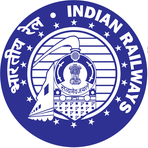Indian Railways: A Green Revolution on the Tracks
August 31, 2024, 3:53 am
Indian Railways is on a mission. A mission to transform itself into a beacon of sustainability. The goal? Achieve net-zero emissions by 2030. This ambitious target is not just a number; it’s a commitment to the planet. As one of the largest rail networks in the world, Indian Railways is poised to make a significant impact on the environment.
The journey to net-zero emissions is like climbing a mountain. It requires planning, determination, and the right tools. The Railway Board has laid out a comprehensive strategy. It includes extensive electrification of rail lines, harnessing renewable energy, and improving energy efficiency. Each step is crucial. Each step brings them closer to the summit.
Electrification is the backbone of this initiative. Indian Railways is rapidly electrifying its routes. This shift reduces reliance on diesel locomotives. The result? A significant cut in greenhouse gas emissions. Currently, a large portion of the rail network is electrified. The goal is to electrify all broad-gauge routes soon. This is not just about reducing emissions; it’s about setting a standard for others to follow.
Renewable energy is another pillar of this green revolution. Solar panels are sprouting on station rooftops. Wind energy projects are in the pipeline. These initiatives are not just environmentally friendly; they also lower operational costs. A win-win situation. By embracing renewable energy, Indian Railways is paving the way for a sustainable future.
Energy efficiency is the final piece of the puzzle. The Railway Board is pushing for innovative technologies. Regenerative braking systems and energy-saving measures are being implemented. These technologies optimize energy use. They contribute to the overall reduction of emissions. The railways are not just a mode of transport; they are becoming a model of sustainability.
This transition is more than just a national effort. It sets a precedent for other sectors in India. It showcases the potential of large-scale renewable energy adoption. Indian Railways is not just contributing to national environmental goals; it is setting a benchmark for sustainable practices globally.
The impact of this initiative extends beyond the environment. It touches the lives of millions. With cleaner trains, passengers can travel with peace of mind. They can feel good about their choices. This shift towards sustainability is a collective journey. It requires the support of the public, government, and industry.
Meanwhile, in Kolkata, the East-West Metro has become a lifeline. Amid protests and chaos, it ferries commuters safely underground. The Esplanade-Howrah Maidan section has seen a surge in ridership. Over 47,000 passengers traveled by 5 PM, far exceeding expectations. This metro line is not just a transport system; it’s a symbol of resilience. It connects people, even in times of turmoil.
In Mumbai, the Metropolitan Region Development Authority (MMRDA) is making strides too. A tender has been issued for the construction of Line 4 of the Mumbai Metro. This ambitious project spans from Bhakti Park to Mulund Fire Station. It includes the design, construction, and commissioning of ballastless trackwork. The project is valued at a staggering Rs 2 billion. It’s a testament to the city’s commitment to modernizing its transport infrastructure.
In Patna, the District Magistrate is urging swift action on land acquisition for the metro project. This urgency reflects the need for timely project completion. The Patna Metro Rail Project is crucial for the city’s development. With 75.9 acres already acquired, the focus is on removing obstacles. This proactive approach ensures that the benefits of the metro reach the public sooner.
The renaming of eight railway stations in Lucknow is another step towards modernization. This initiative aims to improve regional identification. Clearer station names enhance navigation for passengers. It’s a small change with a big impact. It reflects Indian Railways’ commitment to better serve its customers.
As Indian Railways embarks on this green journey, it faces challenges. The path to net-zero emissions is fraught with obstacles. But with determination and innovation, these challenges can be overcome. The railway network is not just a means of transport; it’s a lifeline for millions.
In conclusion, Indian Railways is at a crossroads. The decision to pursue net-zero emissions is bold. It’s a commitment to a sustainable future. With electrification, renewable energy, and energy efficiency, the railways are transforming. They are setting a standard for others to follow. This journey is not just about trains; it’s about the future of our planet. As the wheels turn, so does the promise of a greener tomorrow.
The journey to net-zero emissions is like climbing a mountain. It requires planning, determination, and the right tools. The Railway Board has laid out a comprehensive strategy. It includes extensive electrification of rail lines, harnessing renewable energy, and improving energy efficiency. Each step is crucial. Each step brings them closer to the summit.
Electrification is the backbone of this initiative. Indian Railways is rapidly electrifying its routes. This shift reduces reliance on diesel locomotives. The result? A significant cut in greenhouse gas emissions. Currently, a large portion of the rail network is electrified. The goal is to electrify all broad-gauge routes soon. This is not just about reducing emissions; it’s about setting a standard for others to follow.
Renewable energy is another pillar of this green revolution. Solar panels are sprouting on station rooftops. Wind energy projects are in the pipeline. These initiatives are not just environmentally friendly; they also lower operational costs. A win-win situation. By embracing renewable energy, Indian Railways is paving the way for a sustainable future.
Energy efficiency is the final piece of the puzzle. The Railway Board is pushing for innovative technologies. Regenerative braking systems and energy-saving measures are being implemented. These technologies optimize energy use. They contribute to the overall reduction of emissions. The railways are not just a mode of transport; they are becoming a model of sustainability.
This transition is more than just a national effort. It sets a precedent for other sectors in India. It showcases the potential of large-scale renewable energy adoption. Indian Railways is not just contributing to national environmental goals; it is setting a benchmark for sustainable practices globally.
The impact of this initiative extends beyond the environment. It touches the lives of millions. With cleaner trains, passengers can travel with peace of mind. They can feel good about their choices. This shift towards sustainability is a collective journey. It requires the support of the public, government, and industry.
Meanwhile, in Kolkata, the East-West Metro has become a lifeline. Amid protests and chaos, it ferries commuters safely underground. The Esplanade-Howrah Maidan section has seen a surge in ridership. Over 47,000 passengers traveled by 5 PM, far exceeding expectations. This metro line is not just a transport system; it’s a symbol of resilience. It connects people, even in times of turmoil.
In Mumbai, the Metropolitan Region Development Authority (MMRDA) is making strides too. A tender has been issued for the construction of Line 4 of the Mumbai Metro. This ambitious project spans from Bhakti Park to Mulund Fire Station. It includes the design, construction, and commissioning of ballastless trackwork. The project is valued at a staggering Rs 2 billion. It’s a testament to the city’s commitment to modernizing its transport infrastructure.
In Patna, the District Magistrate is urging swift action on land acquisition for the metro project. This urgency reflects the need for timely project completion. The Patna Metro Rail Project is crucial for the city’s development. With 75.9 acres already acquired, the focus is on removing obstacles. This proactive approach ensures that the benefits of the metro reach the public sooner.
The renaming of eight railway stations in Lucknow is another step towards modernization. This initiative aims to improve regional identification. Clearer station names enhance navigation for passengers. It’s a small change with a big impact. It reflects Indian Railways’ commitment to better serve its customers.
As Indian Railways embarks on this green journey, it faces challenges. The path to net-zero emissions is fraught with obstacles. But with determination and innovation, these challenges can be overcome. The railway network is not just a means of transport; it’s a lifeline for millions.
In conclusion, Indian Railways is at a crossroads. The decision to pursue net-zero emissions is bold. It’s a commitment to a sustainable future. With electrification, renewable energy, and energy efficiency, the railways are transforming. They are setting a standard for others to follow. This journey is not just about trains; it’s about the future of our planet. As the wheels turn, so does the promise of a greener tomorrow.

